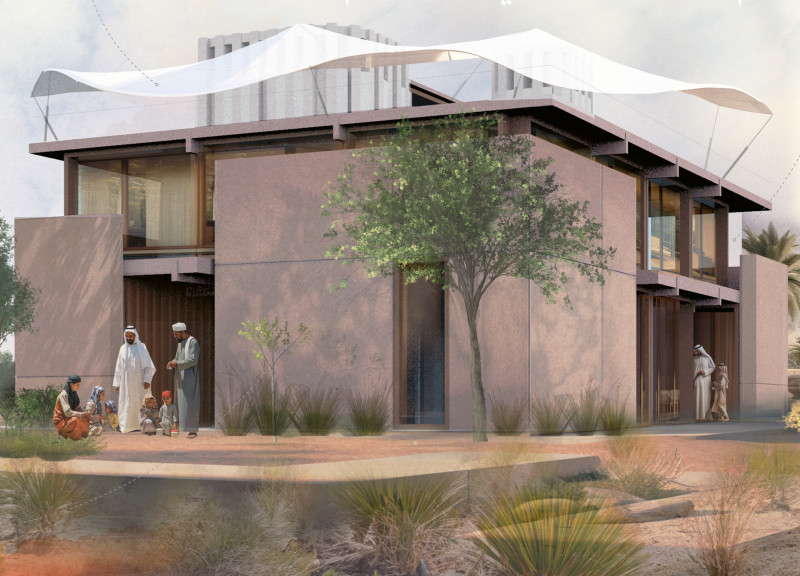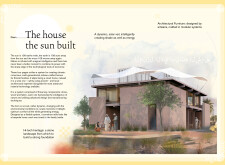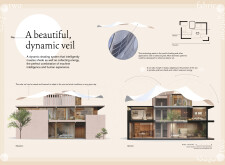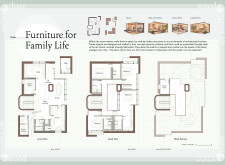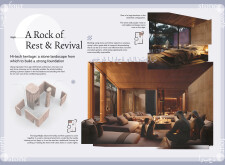5 key facts about this project
## Project Overview
Located in a context-sensitive geography, the House the Sun Built exemplifies an architectural design that integrates advanced technology with traditional Emirati cultural elements to create climate-responsive, multi-generational homes for families. The intent of this project is to harmonize with the natural environment while embodying elements of sustainability and adaptability fundamental to contemporary living.
### Material Strategy
The design employs a triadic system of stone, wood, and fabric, each selected for its performance and aesthetic contribution. Stone serves as the primary structural material, providing thermal mass that regulates interior temperatures, thus ensuring comfort in extreme conditions. Complementing the stone, wood is utilized in modular systems that form architectural furniture, allowing for flexible interiors that adjust to the evolving needs of family life. The fabric components function as a dynamic solar veil, adjustable in response to environmental variables, offering both shading and the capacity for solar energy collection. This adaptation enhances building performance while creating a visually compelling narrative that reflects traditional Islamic art styles.
### Spatial Organization
Designed to promote communal interactions, the spatial layout incorporates features such as an open courtyard that fosters social gatherings and family engagement. The arrangement includes dedicated areas for communal activities, such as a Majlis and dining spaces, alongside private rooms and a prayer space, facilitating both connectivity and personal privacy. This approach establishes a balanced living environment that caters to the cultural values of family and community, reinforcing social ties in Emirati culture.
Additionally, the house utilizes an adaptive design philosophy, allowing it to fluctuate based on user needs and environmental conditions, eschewing fixed layouts in favor of versatile spaces. The incorporation of natural ventilation techniques and a plenum system minimizes reliance on mechanical air conditioning, reflecting a commitment to sustainability and reduced carbon footprint while honoring traditional methods of climate control.


